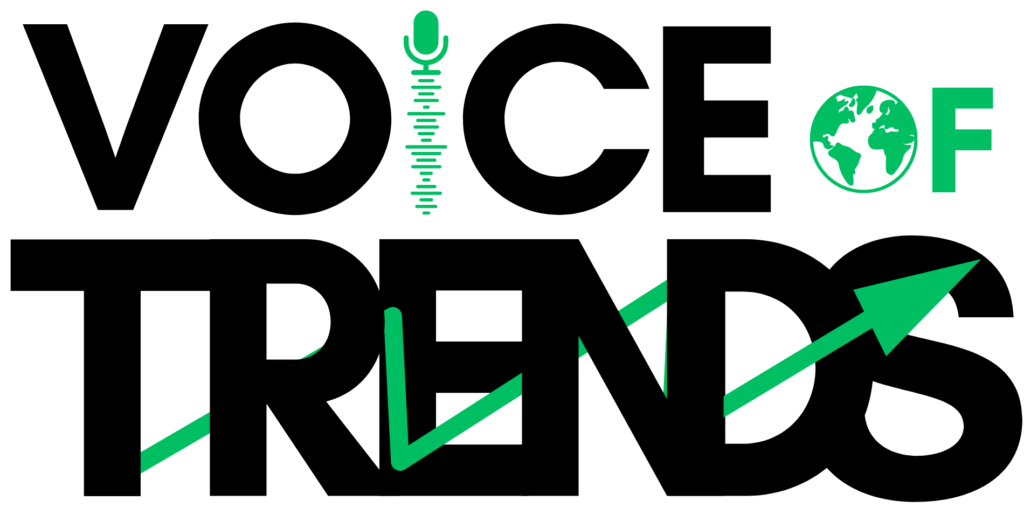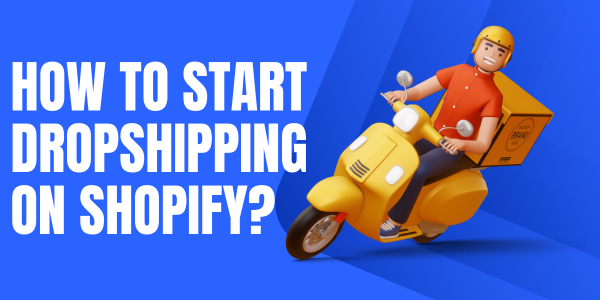Table of Contents
ToggleIntroduction to Dropshipping
What is Dropshipping?
Dropshipping is a business model that allows you to sell products without holding inventory. When a customer places an order, you purchase the item from a third-party supplier who ships it directly to the customer. This eliminates the need for upfront investment in stock and storage, making it an attractive option for entrepreneurs.
Why Choose Shopify for Dropshipping?
Shopify is one of the most popular e-commerce platforms for dropshipping. It offers an easy-to-use interface, a variety of customizable templates, and a robust app ecosystem. Whether you’re a beginner or an experienced entrepreneur, Shopify provides the tools you need to set up and manage your online store efficiently.
Benefits of Dropshipping on Shopify
- Low Startup Costs: You don’t need to invest in inventory, reducing your initial expenses.
- Flexibility: You can run your business from anywhere in the world.
- Scalability: As your business grows, Shopify offers tools and apps to help you scale.
- Variety of Suppliers: Shopify integrates with multiple dropshipping apps, giving you access to a wide range of suppliers and products.
Setting Up Your Shopify Store
Sign Up for Shopify
The first step in starting your dropshipping business on Shopify is to sign up for an account. Shopify offers a 14-day free trial, so you can explore the platform before committing to a paid plan.
Choosing the Right Shopify Plan
Shopify offers several pricing plans, starting from $39 per month. Choose a plan that aligns with your business goals and budget. If you’re just starting, the Basic plan might be sufficient, but as you scale, you might want to upgrade to access more advanced features.
Selecting a Niche for Your Dropshipping Business
Choosing the right niche is crucial for the success of your dropshipping business. Your niche should be something you’re passionate about and have a demand in the market.
Researching Trending Products
Use tools like Google Trends, social media, and market research platforms to find trending products in your chosen niche. Look for products with consistent demand but low competition.
Identifying Your Target Audience
Understanding your target audience is key to successful marketing and sales. Define your audience’s demographics, interests, and buying behaviors to tailor your store and marketing efforts accordingly.
Customizing Your Shopify Store
Once you’ve selected your niche and plan, it’s time to customize your Shopify store. A well-designed store can significantly impact your conversion rates.
Choosing a Theme
Shopify offers both free and premium themes. Choose a theme that aligns with your brand and provides a good user experience. Make sure it’s mobile-responsive since a significant portion of online shopping is done on mobile devices.
Adding Essential Pages (About, Contact, etc.)
Your store should have essential pages like About Us, Contact, and Shipping Information. These pages build trust with your customers and provide them with the information they need.
Designing Your Store’s Layout
Design your store’s layout to be clean, intuitive, and easy to navigate. Highlight your best-selling products on the homepage and ensure that your product categories are well-organized.
Finding and Importing Products
Finding Reliable Suppliers
Your suppliers play a crucial role in the success of your dropshipping business. Reliable suppliers ensure timely delivery and product quality, which are essential for customer satisfaction.
Using Oberlo and Other Apps
Oberlo is a popular app for finding products and suppliers. It allows you to import products directly into your Shopify store with just a few clicks. Other apps like Spocket and Modalyst are also great for sourcing products from suppliers.
Evaluating Supplier Reliability
Before partnering with a supplier, check their reviews, shipping times, and communication responsiveness. A reliable supplier should have positive reviews, fast shipping, and prompt responses to your inquiries.
Importing Products to Your Store
Once you’ve found reliable suppliers, you can start importing products to your store.
Product Descriptions and Pricing
Write compelling product descriptions that highlight the benefits and features of the products. Use high-quality images and videos to showcase the products. Set competitive prices by considering your costs, competitor pricing, and profit margins.
Setting Up Inventory and Shipping Options
Set up your inventory management and shipping options in Shopify. You can choose to offer free shipping or charge based on the customer’s location. Make sure to set clear shipping policies to avoid any confusion.
Optimizing Your Shopify Store for Sales
SEO Strategies for Shopify
Search engine optimization (SEO) is critical for driving organic traffic to your store. Optimizing your store for search engines can help you rank higher in search results, attracting more potential customers.
Keyword Research
Use tools like Google Keyword Planner, Ahrefs, or SEMrush to find relevant keywords for your niche. Focus on long-tail keywords that are less competitive but have high search intent.
Optimizing Product Pages
Include your target keywords in product titles, descriptions, and meta tags. Ensure your images are optimized with alt text, and your site loads quickly to improve user experience and SEO rankings.
Writing Compelling Product Descriptions
Your product descriptions should be informative, engaging, and persuasive. Highlight the unique selling points of each product and address any potential customer concerns. Use bullet points for easy readability and include a clear call-to-action.
Setting Up Payment Methods
Shopify supports multiple payment gateways, including Shopify Payments, PayPal, and Stripe. Choose the payment methods that are most convenient for your target audience. Ensure that your checkout process is simple and secure to reduce cart abandonment.
Marketing Your Shopify Dropshipping Store
Once your store is set up, it’s time to start driving traffic and generating sales.
Using Social Media to Drive Traffic
Social media platforms like Instagram, Facebook, and Pinterest are excellent for promoting your dropshipping store. Create engaging content, run paid ads, and interact with your audience to build brand awareness and drive traffic to your store.
Email Marketing Strategies
Email marketing is a powerful tool for converting visitors into customers. Collect email addresses through pop-ups and lead magnets, and send regular newsletters with promotions, new arrivals, and personalized product recommendations.
Leveraging Influencers for Promotion
Partnering with influencers in your niche can help you reach a larger audience and build credibility. Choose influencers whose followers align with your target audience and offer them free products or commissions for promoting your store.
Managing Orders and Customer Service
Order Fulfillment Process
Once you start receiving orders, it’s essential to have a streamlined order fulfillment process. Ensure that orders are processed quickly and customers receive timely updates on their order status.
Handling Returns and Refunds
Set clear return and refund policies on your website. Make the process easy for customers and handle returns and refunds promptly to maintain customer satisfaction.
Providing Excellent Customer Service
Customer service is crucial in dropshipping, as it can differentiate your store from competitors.
Responding to Customer Inquiries
Respond to customer inquiries promptly and professionally. Use live chat, email, or social media to provide support and address any issues or concerns.
Handling Negative Reviews
Negative reviews are inevitable, but how you handle them can make a big difference. Address the customer’s concerns, offer solutions, and take the feedback as an opportunity to improve your business.
Scaling Your Dropshipping Business
Analyzing Sales Data and Metrics
Regularly review your sales data and metrics to identify trends, strengths, and areas for improvement. Use Shopify’s built-in analytics tools or integrate with third-party apps to track your performance.
Expanding Your Product Range
As your business grows, consider expanding your product range to attract more customers and increase sales. Introduce new products that complement your existing offerings and appeal to your target audience.
Automating Processes with Apps
Use automation tools and apps to streamline your business operations. Automate tasks like order processing, email marketing, and social media posting to save time and focus on growth strategies.
Creating a Long-Term Growth Strategy
Plan for the long term by setting goals, creating marketing strategies, and continuously improving your store. Stay updated with industry trends, adapt to changes, and always strive to provide the best customer experience.
Common Mistakes to Avoid in Dropshipping
Choosing the Wrong Niche
One of the biggest mistakes in dropshipping is choosing a niche with low demand or high competition. Thoroughly research your niche before starting to ensure there is a market for your products.
Neglecting Customer Service
Poor customer service can lead to negative reviews and lost sales. Always prioritize your customers and provide excellent support to build trust and loyalty.
Overlooking SEO
Ignoring SEO can result in low visibility and traffic to your store. Invest time in optimizing your store for search engines to attract organic traffic and improve your search rankings.
Ignoring Analytics and Metrics
Failing to monitor your store’s performance can prevent you from identifying issues and opportunities for growth. Regularly analyze your sales data and metrics to make informed decisions and improve your business.
Conclusion
Starting a dropshipping business on Shopify is a great way to enter the world of e-commerce with minimal risk and investment. By following the steps outlined in this guide, you can set up your store, find reliable suppliers, and start generating sales. Remember, success in dropshipping requires dedication, continuous learning, and a focus on providing value to your customers.
FAQs
How much money do I need to start dropshipping on Shopify?
You can start with as little as $100-$500, depending on your niche, marketing strategies, and Shopify plan.
Can I start dropshipping on Shopify without experience?
Yes, Shopify’s user-friendly platform and numerous resources make it accessible for beginners.
How do I find the best suppliers for my Shopify dropshipping store?
Use apps like Oberlo, Spocket, and AliExpress to find reliable suppliers. Check reviews, shipping times, and communication responsiveness before partnering.
What are the best marketing strategies for Shopify dropshipping?
Social media marketing, email marketing, and influencer collaborations are effective strategies to drive traffic and sales.
Is dropshipping on Shopify still profitable in 2024?
Yes, with the right niche, products, and marketing strategies, dropshipping on Shopify can still be a profitable business model.




















